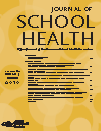Results of Global Youth Tobacco Surveys in Public Schools in Bogotá, Colombia
Abstract
BACKGROUND: The purpose of this paper is to use data from the Global Youth Tobacco Survey (GYTS) conducted in Bogotá, Colombia, in 2001 and 2007 to examine changes in tobacco use among youth 13-15 years of age. The current tobacco control effort in Bogotá will be accessed relative to Colombia ratifying the World Health Organization Framework Convention on Tobacco Control (WHO FCTC) in 2008.
METHODS: GYTS was implemented in public schools in Bogotá, Colombia, by the Colombian National Cancer Institute. Data were collected from students in classrooms using self-administered procedures.
RESULTS: Between 2001 and 2007, ever having smoked cigarettes decreased along with exposure to secondhand smoke (SHS) at home, having an object with a tobacco logo on it, and having been offered free cigarettes by a tobacco company representative. Prevalence of current cigarette smoking did not change from 2001 to 2007 (32.9% and 29.9%). Exposure to pro-tobacco advertising increased, reaching 71.4%, and 73.4% respectively, in 2007. Having been taught about the harmful effects of tobacco use did not change over time.
CONCLUSIONS: The government of Colombia ratified the WHO FCTC in 2008. However, Colombia has one of the highest levels of cigarette smoking among 13-15 year olds in the Region of the Americas. The tobacco control effort in Colombia has much work to do, including recognition that the levels of smoking among adolescents are already as high as those of adults. Future declines in tobacco use among adolescents in Bogotá will likely depend on development of a comprehensive tobacco control program.




